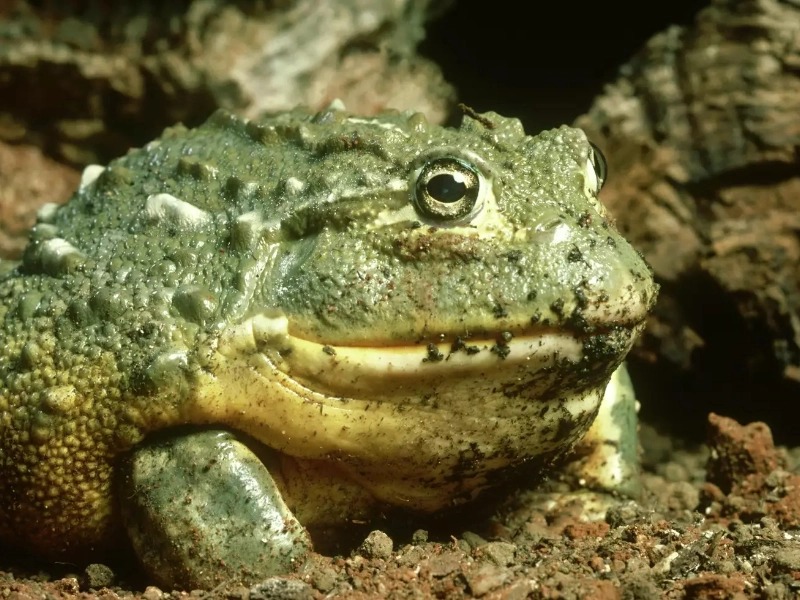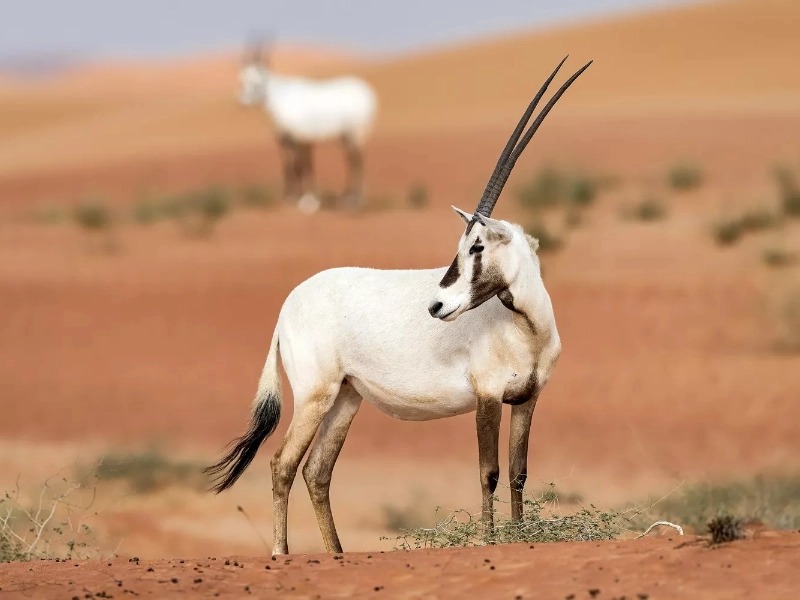
17 Animals Amazingly Adapted to Thrive in Deserts
By • Last Updated4. Arabian Oryx

Scientifically known as Oryx leucoryx, the Arabian oryx is a remarkable herbivore that has beautifully adapted to thrive in the harsh conditions of desert habitats. With its striking white coat and long, straight horns, the Arabian oryx is not just a symbol of beauty but also a testament to the resilience of species in arid environments. Once on the brink of extinction, successful conservation efforts have reintroduced this incredible species back into its natural habitats across the Arabian Peninsula, underscoring the importance of dedicated wildlife preservation.
One of the most notable adaptations of the Arabian oryx is its unique coloration. The animal’s white coat reflects sunlight during the scorching daytime, helping to regulate its body temperature and prevent overheating. Conversely, the darker coloration of its legs absorbs heat during the cooler desert mornings, allowing the oryx to maintain a comfortable body temperature as it transitions from the coolness of dawn to the midday heat. This remarkable adaptation is crucial for survival in an environment characterized by extreme temperature fluctuations.
The Arabian oryx is also an adept forager, capable of locating food in its arid surroundings. Its keen senses allow it to detect fresh grasses and plants sprouting after rain from considerable distances. This ability to sense moisture is vital, enabling the oryx to capitalize on fleeting periods of abundant food. In addition to grasses, the Arabian oryx consumes a variety of vegetation, including leaves, fruits, and even roots when other food sources are scarce. This dietary flexibility is essential for survival in an environment where food availability can be unpredictable.
Another key adaptation of the Arabian oryx is its water conservation strategy. Remarkably, these animals can go for days—sometimes even weeks—without a substantial drink of water. Instead, they obtain moisture from the plants they consume, allowing them to thrive in dry areas with limited water sources. Their ability to survive on minimal water intake is a testament to their remarkable adaptations to desert life.
Behaviorally, the Arabian oryx is crepuscular, meaning it is most active during the cooler hours of dawn and late afternoon. During the hottest part of the day, it seeks refuge in shaded areas to escape the intense heat. This behavioral adaptation not only helps the oryx conserve energy but also reduces the risk of overheating, making it well-suited for life in the desert.
In summary, the Arabian oryx serves as an extraordinary example of adaptation to desert existence. Its unique coloration, effective foraging techniques, and exceptional water conservation abilities highlight the resilience of this species in one of the most challenging habitats on Earth. As conservation initiatives continue to focus on protecting this iconic animal, understanding its adaptations will be crucial for ensuring the survival of the Arabian oryx and the preservation of the fragile ecosystems it inhabits.